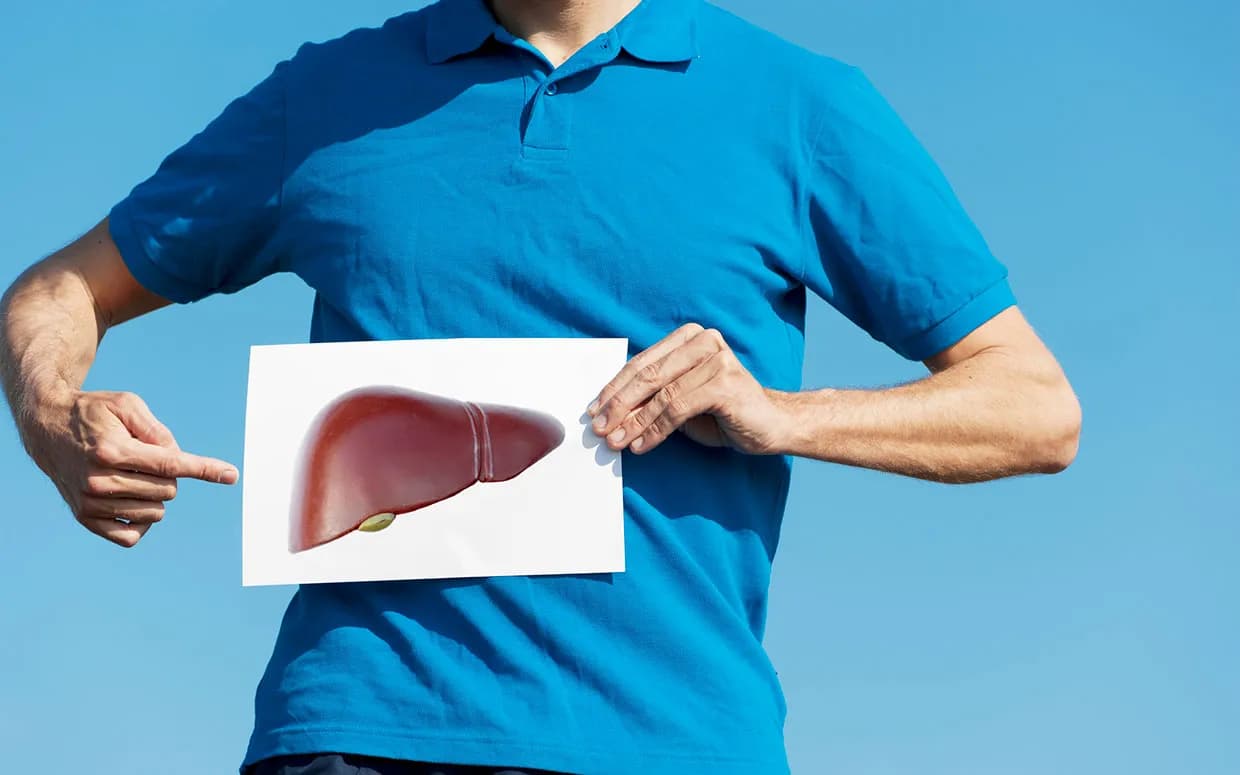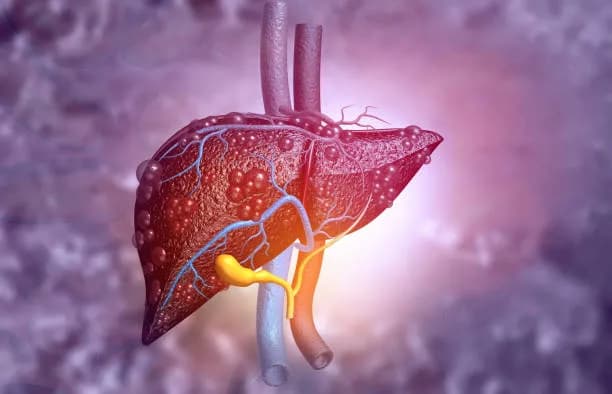Overview
A liver transplant is a surgery performed to remove a non-functioning liver (liver failure) and replace it with a healthy liver. which could be donated from either a deceased donor or a portion of a healthy liver from a living donor.

Liver transplant is a surgical procedure to remove liver that’s no longer functioning and replacing it with a healthy one. Which could be a portion of a healthy liver.
A liver transplant is a surgery performed to remove a non-functioning liver (liver failure) and replace it with a healthy liver. which could be donated from either a deceased donor or a portion of a healthy liver from a living donor.
The liver, the largest internal organ, performs many critical functions, including:

A liver transplant is a treatment option for those suffering significant complications due to end-stage chronic liver disease. Also in rare cases of sudden failure of a previously healthy liver, a liver transplant may be an option. A living-donor liver transplant is possible since the human liver can regenerate and return to its standard size shortly after surgical removal of part of the organ. A liver transplant is a surgical procedure of removing a liver that no longer functions and replacing it with a healthy liver from either a deceased donor or a portion of a healthy liver from a living donor. Life expectancy after a liver transplant depends on many reasons such as the reason for transplantation, age, co-morbidities, and response to the drugs the person is put on post-transplant. Most people live on for more than 10 years after liver transplantation.
Once a person has signs of liver failure, they may experience:
The cost for liver transplant surgery may vary based on the patient's specific surgical needs, surgeons' fees, and anesthesia and surgery center or hospital fees.
People who receive a liver transplant usually live for more than 10 years. Many may live for up to 20 years or more after the transplant.
Studies show that people who’ve had a liver transplant have an 89% chance of life after 1 year. For five-year survival, the rate is 75%. Although sometimes the transplanted liver may fail, or even the original disease may return.
Even if part of your liver is damaged or removed, it can keep working. But in case of liver failure (complete shutdown), you’ll need emergency treatment since you can only survive for only a day or 2.
A liver transplant is a surgical procedure that replaces a diseased or damaged liver with a healthy one from a donor. A liver transplant may be the only option for people who have end-stage liver disease, which means their liver can no longer function properly and is beyond repair. However, not everyone with liver disease is eligible for a liver transplant. Certain criteria must be met to be considered a suitable candidate for this procedure:
Different types of liver transplants may be offered to a person who has end-stage liver disease and needs a new liver to survive. The type of liver transplant depends on the source and size of the donor's liver, as well as the recipient’s condition and preference. The main types of liver transplants are:
These are some of the main types of liver transplants, but there may be other variations or combinations depending on the availability of donors and the specific needs of the recipients.
Age restrictions for liver transplants are not fixed but rather depend on various factors, such as the source and condition of the donor's liver, the health and prognosis of the recipient, and the policies and practices of the transplant center. Generally speaking, older people have a lower chance of receiving a liver transplant than younger people, because they may have more medical complications, a shorter life expectancy, and a lower quality of life after the transplant. However, age alone is not a decisive criterion, and each case is evaluated individually based on the potential benefits and risks of the transplant.
The age of the donor also affects the outcome of the liver transplant. Generally, younger donors have better quality livers than older donors, and their livers are more likely to function well and last longer in the recipients. However, due to the shortage of available organs, older donor livers are also used for transplantation, especially for older or sicker recipients who have a lower chance of getting a younger donor liver. Older donor livers may have more damage, such as fibrosis, steatosis, or reduced blood flow, which can increase the risk of complications, such as primary graft non-function, ischemia-reperfusion injury, or chronic rejection.
The decision to accept or reject a candidate or a donor for a liver transplant is made by a multidisciplinary team of experts, who weigh the pros and cons of the procedure and consider the ethical and practical implications.
The assessment process before a liver transplant is a comprehensive evaluation that determines whether a person is eligible and suitable for a liver transplant. The process involves a series of tests, consultations, and education sessions that aim to assess the physical, mental, social, and financial aspects of the transplant. The process may vary depending on the transplant center, but it usually takes about a week and requires the presence of a caregiver or a support person.
The tests that are performed during the assessment process include blood tests, chest X-rays, lung function tests, electrocardiogram (ECG), fitness tests, echocardiogram, kidney function tests, coronary angiography, scans, and endoscopy. These tests check the condition and function of the liver and other organs and identify any potential complications or contraindications for the transplant. The tests also help to determine the severity and urgency of the liver disease, which is measured by a score called the model for end-stage liver disease (MELD) or the pediatric end-stage liver disease (PELD) for children.
The assessment process before a liver transplant is a crucial step that helps the transplant team decide on the candidacy and priority of the person for a liver transplant. The decision is based on the results of the tests and consultations, as well as the availability and suitability of a donor's liver. The decision is communicated to the person and the family, and if approved, the person is placed on the waiting list for a liver transplant. The assessment process also prepares the person and the family for the transplant journey and provides them with support and guidance throughout the process.
In general, tests might include:
Equipped hospitals and advanced specialized centers with experienced doctors and specialists are available in all medical treatment areas in Iran. Also, good hotels and entertainment centers have made Iran an appropriate choice for patients who suffer from end-stage chronic liver disease. Shiraz is Iran’s leading city in liver transplant surgery, but keep in mind because this is an organ donation surgery, you’ll need to travel to Iran with your donor for liver transplant surgery to be done.

A liver transplant can be a life-saving treatment for people with end-stage liver disease, but it is also a very expensive procedure that involves many costs, such as the surgery, the hospital stay, the medications, the follow-up care, and the possible complications.
The cost of a liver transplant can vary depending on the source and condition of the donor's liver, the health and prognosis of the recipient, and the policies and practices of the transplant center. The cost of a liver transplant can also vary depending on the country where the transplant is performed, as different countries may have different healthcare systems, insurance coverage, and currency exchange rates. However, it can generally cost anywhere between 20,000 to 45,000 USD for the entire process including pre-operative exams and post-operative care. This is significantly lower than the cost of a liver transplant in many other countries.
One of the reasons why the cost of a liver transplant in Iran is lower than in other countries is that Iran has a legal and regulated system of organ donation and transplantation, which allows the use of living donors and deceased donors for liver transplants. Iran also has a high number of skilled and experienced surgeons and transplant centers, which perform more than 2,000 liver transplants per year, with a high success rate and a low complication rate.
Liver transplant operations in Iran must be approved by the Supreme Council of Health and Medical Education. This council approves the surgery only after verifying that all safety standards are met and that the patient’s rights are protected throughout the process. Furthermore, any hospital or medical professional involved in the transplant must have a valid license from the Ministry of Health and Medical Education.
After receiving the approval, the patient must fill out all the required paperwork and provide any necessary information to ensure that the surgery is done safely and responsibly. With these steps completed, a liver transplant in Iran can be carried out without any problems. In Iran, the donor and recipient must share the same nationality to be eligible for a liver transplant operation. This is done to ensure that all legal requirements are fulfilled and that both parties are well-prepared for the surgery.
Therefore, any potential donor-recipient pairs must comply with all of the legal requirements before they can proceed with a liver transplant in Iran. By following these steps and ensuring that all necessary regulations are adhered to, patients can be confident that their surgery will be done safely and responsibly.
As your donor must be the same nationality as yours, there are a few criteria to determine if a person is the right match for you. These are necessary factors for being someone’s match for a liver transplant:
you can receive a liver from compatible donors only:
| Recipient blood type | Donor blood type |
| O | O only |
| A | A and O |
| B | B and O |
| AB | All Blood types |
The Rh factor (+ or -) of the blood does not matter. If the donor’s blood type is compatible with you, the donor can take the next test: tissue typing.
If your blood types match, the next step is a tissue typing match called human leukocyte antigens (HLA). This test compares genetic markers which prolongs the likely lifetime of the transplanted liver. A good match means your body is less likely to reject the liver.
This includes mixing a small sample of your blood with the donor’s blood in the lab. This test will determine whether your blood’s antibodies will react against certain antibodies in the donor’s blood. If your blood serum destroys the donor’s cells, this is called a positive crossmatch, which means the transplant can’t be done. If you do so, the transplanted liver will be rejected immediately. A negative match will mean that they are compatible and that your body is less likely to reject the donor’s liver.
Following transplant surgery, the liver recipient’s body will detect the new organ as an external object, and command the immune system to destroy it, which is why they are prescribed immunosuppressants.
Immunosuppressants will reduce the immune system’s function, thus preventing the liver from being rejected and destroyed by the immune system. The recipient will be on a lifetime regimen of immunosuppressants. For liver transplant patients, post-surgery care is vital.
A liver transplant surgery is a complex and life-saving procedure that involves replacing a diseased or damaged liver with a healthy one from another person. The surgery can be performed using a whole liver from a deceased donor or a part of a liver from a living donor. The surgery usually takes several hours and requires general anesthesia and a large incision in the upper abdomen. The steps of the surgery may vary depending on the type of transplant, but they generally include the following:
A liver transplant surgery is a major operation that carries significant risks and complications, such as bleeding, infection, blood clots, bile leaks, organ rejection, and graft failure. The recipient will need regular follow-up visits and tests to check the function and health of the new liver. The recipient will also need to take immunosuppressive drugs for the rest of their life to prevent the immune system from attacking the new liver. A liver transplant surgery can improve the survival and quality of life of people with end-stage liver disease, but it also requires lifelong care and commitment.
A liver transplant is a major surgery that requires a long and gradual recovery process. The recovery stages after liver transplant can be divided into four phases: hospital stay, early recovery, late recovery, and long-term follow-up. Each stage includes:
These are the main recovery stages after liver transplant, but they may vary depending on the individual situation of the recipient and the donor. A liver transplant is a complex and challenging procedure, but it can offer a chance for a better quality of life for people with end-stage liver disease.
Some of the main complications of liver transplant include:
A healthy diet after liver transplant surgery should include the following elements:
These are some of the main elements of a healthy diet after liver transplant surgery, but there may be other factors that influence the dietary needs and preferences of the person. A doctor or a dietitian can provide individualized advice and support to help the person follow a healthy diet that suits their lifestyle and goals.
Liver transplant rejection is a condition that occurs when the immune system of the recipient attacks the new liver as a foreign object. Rejection can happen at any time after the transplant, but it is more common in the first few months. Rejection can be acute, which means it happens suddenly and severely, or chronic, which means it happens gradually and mildly. Rejection can damage the new liver and affect its function, and it may require treatment with medication or another transplant.
The signs and symptoms of liver transplant rejection may vary depending on the type and severity of the rejection, and they may not always be noticeable. However, some of the common signs and symptoms that might indicate a liver transplant rejection include:
The treatment for liver transplant rejection depends on the cause, type, and extent of the rejection, and it may involve adjusting the dose or type of immunosuppressive drugs, which are medications that suppress the immune system and prevent it from attacking the new liver. Sometimes, additional drugs, such as steroids or antibodies, may be given to treat the rejection. In some cases, a second transplant may be needed if the rejection is severe or irreversible.